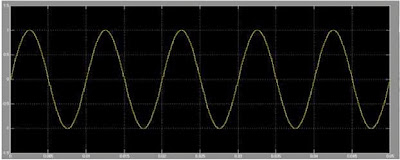Pulse Code Modulation (PCM) and Demodulation
1. ABSTRACT:
Pulse Position
Modulation (PPM) is a form of signal modulation in which M message bits are
encoded by transmitting a single pulse in one of 2*2*2*2...... (M times) or (2 to the power M) possible time shifts. This is repeated every T
seconds, such that the transmitted bit rate is M/T bits per second. It is
primarily useful for optical communication systems, where there tends to be
little or no multipath interference.
2. BLOCK DIAGRAM:
3. CONCEPT:
Message Signal (Sine
Wave) with low frequency is passed through Carrier Signal (Sawtooth Wave) with
high frequency (Fc>2Fm) and then do Pulse Width Modulation (PWM) of the
message signal. To demodulate PPM signal use Phase Looked Loop (PLL) and Low
Pass Filter (LPF) as shown in block diagram.
4. SNAP-SHOTS:
Ø
Message Signal:
Frequency=100Hz
Ø
Carrier Signal:
Frequency=500Hz
Ø
PWM Output:
Ø
PPM Output:
Ø
Demodulated Message Signal:














